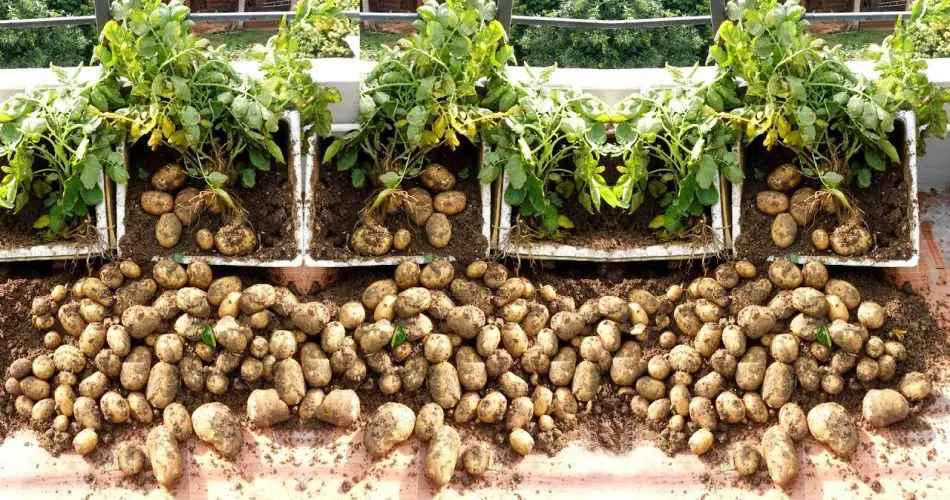Growing potatoes at home is a rewarding and cost-effective way to enjoy fresh, homegrown produce. If you’ve discovered a trick that works well for you, that’s fantastic! However, without specific details about the trick you’re referring to, I’ll provide a general guide on how to grow potatoes at home. You can adapt these tips based on your unique approach:
Materials Needed:
- Seed Potatoes: Purchase seed potatoes from a reputable source. Choose certified disease-free varieties.
- Containers or Garden Beds: Decide whether you’ll grow potatoes in containers, bags, or garden beds. Containers and bags are suitable for small spaces like balconies or terraces.
- Quality Soil: Use well-draining, loose soil enriched with organic matter. Potatoes prefer slightly acidic to neutral soil.
- Sunlight: Choose a sunny location for your potato plants. Potatoes thrive in full sunlight.
- Water: Keep the soil consistently moist, especially during the growing season. Potatoes need regular watering.
Steps:
- Preparing Seed Potatoes:
- Cut seed potatoes into chunks, ensuring that each chunk has at least one or two “eyes” (sprouts). Allow the cut surfaces to air dry for a day before planting.
- Planting:
- Plant the seed potato chunks about 4-6 inches deep in the soil. Space them 12-15 inches apart. If using containers or bags, plant one or two seed potatoes per container.
- Hilling:
- As the potato plants grow, hill up soil around the base of the plants to cover the lower stems. This encourages the development of additional tubers.
- Watering:
- Keep the soil consistently moist, especially during the flowering and tuber formation stages. Potatoes need even moisture to produce quality tubers.
- Fertilization:
- Fertilize the potato plants with a balanced fertilizer. Avoid excessive nitrogen, as it can promote excessive foliage growth at the expense of tuber development.
- Mulching (Optional):
- Apply a layer of mulch around the potato plants to help retain soil moisture, regulate temperature, and suppress weeds.
- Harvesting:
- Potatoes are ready for harvest when the plants have died back. Carefully dig around the base of the plants to harvest the potatoes. Be gentle to avoid damaging the tubers.
Tips:
- Variety Selection:
- Choose potato varieties suited to your climate and growing conditions. Some popular varieties include Russet, Yukon Gold, and Red Norland.
- Early and Late Plantings:
- Consider planting early and late varieties for a staggered harvest throughout the growing season.
- Container Gardening:
- Potatoes can be grown in containers, bags, or even stacked tires. This is ideal for small spaces and allows you to control the soil quality.
- Disease Prevention:
- Practice crop rotation to reduce the risk of potato diseases. Avoid planting potatoes in the same spot year after year.
- Storage:
- Store harvested potatoes in a cool, dark place to prevent sprouting and prolong shelf life.
Remember, the specific trick you mentioned may involve unique details, so adapt these general guidelines based on your experience and the method you’ve found successful. Homegrown potatoes are not only delicious but also a satisfying result of your gardening efforts. Enjoy your potato harvest!
Show Comments



